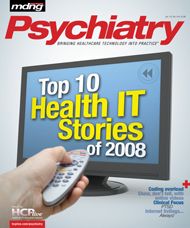Tech Sectors: Online Patient Education: Show, Don't Tell with Online Educational Videos
Dean Heller, MD, President of VideoMD—an online library of physician-created, patient education videos—explains the benefits to both patients and physicians of www.videomd.com.
Dean Heller, MD, President of VideoMD—an online library of physician-created, patient education videos—explains the benefits to both patients and physicians of www.videomd.com.
How did the idea to create VideoMD arise?
What need does it fulfill for practicing physicians? A number of colleagues and I realized that the audiences of our hospitalbased lectures always included quite a few patients. When asked why they attended, many said it’s because there’s not enough time during offi ce visits to talk about education. It dawned on us that, because of how busy doctors are, and because we’re always talking about procedures and results of tests while a patient is in our office, there’s just not enough time for full education on all disease processes. That was the initial basis of VideoMD; it’s a convenient way for doctors to help educate their own patients.
The other impetus was that practitioners are faced with a media that misreports or gives a slanted perspective on health information, and it’s been a detriment to patient—physician relationships. A trial may come out and the data may not be that bad, but people may get distorted or incomplete information from the media and decide to not take a drug, or they may hear “this drug could be killing you.” It creates problems for doctors who get 30 calls about the same thing. So, rather than answer the same question 30 times a day, you can post a video online about that particular issue and refer patients to it.
How would an interested physician get involved?
The site is free to use. It takes just a minute to register online. The site is fully uploadable, just like YouTube. Doctors go online, register, and then make their own video. We’re trying to save doctors time in the offi ce and help educate patients. They don’t have to make expertly produced videos. We tell our users to produce it just as if they were talking to their patients in the offi ce; it can be with a hand camera or on a laptop or however they want to do it, and they can post it right to the site. All their videos are viewed on one page; a patient searches for the doctor by name, and then all of that doctor’s videos will show up on one page. We also have, for doctors who are camera shy and don’t want to do their own videos, some stock animated videos on multiple procedures—or they can just do audio with slides. With the animated videos, a doctor can put all the ones he or she wants on one page for their patients to view. Although they’re stock videos that patients could see elsewhere, it’s coming from their own doctor who has looked over the information, and it has their name on it.
Why would physicians post a video to VideoMD as opposed to their own sites?
The overwhelming majority of physicians don’t have websites. I actually don’t have a personal website for my practice. It’s just not a technology that’s easy for doctors to keep up, and the beauty of VideoMD for any individual doctor is that you can post your video and then we’re responsible for the site. We manage the site. For those who do have their own site with videos on them, we tell them, “If you’ve gone through what it takes to make a video, why not post it on both?” I think VideoMD is a way for doctors to contribute to the education of all patients. We give doctors the choice to post their videos as a “featured video” or only on their own page. If they chose it to be a featured video, we check the medical content, and if it’s good, we put it on the “Featured” pages, where it’s searchable by anyone by disease, condition, and keyword.
What have been the experiences of physicians who use VideoMD?
Doctors and patients have both been positive about it. We’ve signed up more than 1,000 doctors, a reasonable percentage of whom have posted videos. A number of doctors using the service are sending patients for any number of reasons, including general education and procedural information. For example, I’m a cardiologist, so I do catheterization. When someone’s coming in for that procedure, I say “go to my page on VideoMD and watch my video on heart catheterization.” That way, when I enter the room, they’ve received the basic education, making it that much easier for both of us to discuss the procedure.
